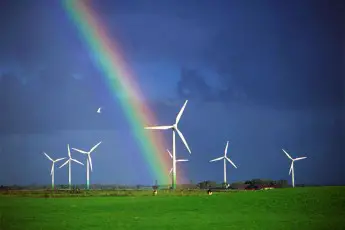Wind energy is the best renewable energy source, which comes from the wind. This wind is significantly converted into wind power, which is then utilized as a source of electricity. The efficient process of this renewable energy conversion is accomplished by wind turbines, wind mills or wind pumps. Wind energy is an imperative source of electricity as it is a clean and renewable source. In this post, we will list 10 wind energy facts that should be known to all.

Wind Energy Facts
Here are interesting top 10 wind energy facts briefly discussed.
1. The utilization of wind energy is not new. It was first utilized by Egyptians over 5000 years ago mainly for sailing ships. In between 500 to 900 AD, the windmills were used for the pumping water and grinding grain in Persia. In 1888, the windmill was first utilized to generate electricity by Charles Brush in Cleveland Ohio. In early 1930’s, the Dutch reformed the windmill design by enhancing its blades and mounting them onto multi-level towers. It was mainly used for processing grains.
2. Large wind turbines have the capacity to produce sufficient electricity to supply power over 500 homes. These windmills are often positioned in areas of large wind activity where there is an adequate supply of wind all time.
3. A small windmill can produce enough electricity to power up to a home or small business. The amount of power formed mainly depends on the wind activity and even on the length of the wind blades.
4. Vertical windmills produce 50% more power or electricity than that of horizontal windmills. This is why because vertical turbines can catch the wind in any direction.
5. There are some major concerns about producing electricity with this energy, that include; its negative impacts on the inhabitants of bats and birds and also their visual effect on the land or sea especially in tourist locations.
6. The Germany and United States are the world’s leading wind powered countries. Following them are the Spain, India, and the Denmark.
7. Wind power is basically a type of solar power. Wind is produced as the earth’s atmosphere is heated and cooled. As these cold and hot regions meet, it efficiently causes air to move.
8. By Generating sufficient wind power for your house, it can aid you save and also make money. A typical residential home utilizes around 10,000 kilowatts per year. If your windmill produces excess electricity, the power company might buy that electricity from you and thus, you can make money. This works only if your windmill is linked to your main power line.
9. The creation of wind energy offers more jobs than any other type of energy production.
10. The production of this renewable energy does not produce any pollution. Unlike other traditional forms of energy, it requires nearly no water during its production. It is a pollution less renewable energy source.
The aforesaid is few of the vital 10 facts about wind energy. Wind energy is one among the lowest-priced and affordable form of renewable energy. It is also the fastest growing segment among all renewable sources of energy.
